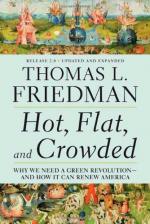|
This section contains 778 words (approx. 3 pages at 300 words per page) |

|
The "green revolution" refers to the widespread introduction of industrial agriculture into developing countries that began in the 1940s. As seen in Norman Borlaug's work on world hunger, its early promoters—led by the Rockefeller Foundation—assumed that increased food production would alleviate hunger in poor countries and thereby help prevent "red" (i.e., communist) revolutions. Although the green revolution has led to impressive increases in agricultural production over the years, critics such as Amartya Sen have argued that poverty and inequality must also be vigorously attacked since the poor typically cannot afford to buy enough food. Others, like Kenneth Dahlberg and Vandana Shiva, have argued that its high social, environmental, and energy costs of the green revolution make it unsustainable.
United States and European seed-breeding technologies devised in the 1930s were used from the 1940s onward to develop high-yielding varieties (HYVs) adapted to the climate...
|
This section contains 778 words (approx. 3 pages at 300 words per page) |

|


